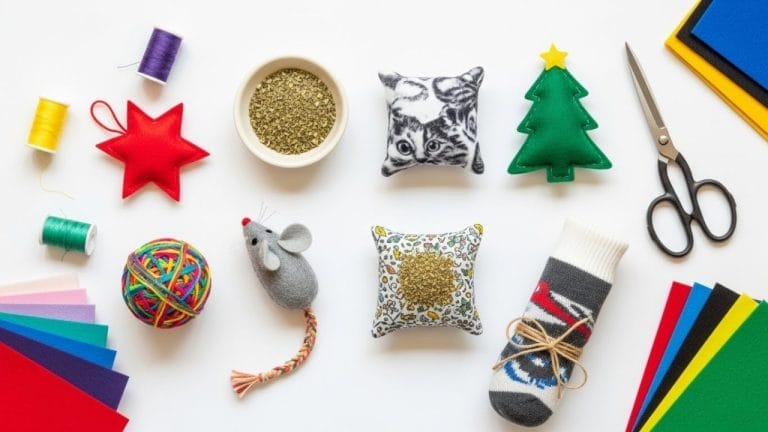7 Secret Ways to Read Your Cat’s Mood (You’ve Been Missing #4!)
You think you know your cat. You see them every day, you feed them, you clean their litter box. But here’s the thing: your cat has been talking to you this whole time, and you’ve probably been missing most of it.
Turns out, cats are way more chatty than we give them credit for. They’re just not using words—they’re using something way cooler.
The Tail That Tells All
Your cat’s tail is basically a mood ring attached to their butt.
Tail Up = Your Cat Actually Likes You
When your cat walks toward you with their tail straight up like a flagpole, that’s the feline equivalent of running up to hug you.
Scientists found that the tail-up display is a friendly signal, and cats use it more often when approaching humans than when interacting with other cats. It’s basically their way of saying “Hey, you’re pretty cool.”
Even better? If that tail has a little question mark curve at the tip, your cat is in a great mood and wants to hang out. This is your green light for pets and playtime.
Tail Thrashing = Back Off, Human
If your cat’s tail is whipping back and forth like they’re trying to swat invisible flies, they’re annoyed.
A rapidly twitching tail, especially with dilated pupils, signals excitement or irritation. Think of it as your cat’s way of sending you a strongly worded email about your behavior.
By the way, if you're into Informative stuff, you’ll wanna check this one out: How to Stop Cats from Climbing Christmas Trees
Slow Blinks Are Cat Smiles
This one blew my mind when I first learned it.
The Science of the Cat Smile
You know when your cat looks at you and does that slow, lazy blink? That’s not them getting sleepy. That’s them telling you they love you.
In a University of Sussex study, researchers found that cats responded more positively to humans who slow-blinked at them. When people gave cats the slow blink treatment, the cats were more likely to approach them compared to people who just stared with a neutral expression.
Even crazier? Shelter cats that slow-blinked more frequently got adopted faster. They literally smiled their way into new homes.
How to Speak Cat
Want to tell your cat you love them back? Slow blink at them.
Look at your cat, narrow your eyes like you’re super relaxed, close them for a couple seconds, then open them slowly. Your cat will probably slow blink back, and you’ve just had a whole conversation without saying a word.
Just don’t stare at them without blinking—cats think that’s threatening and rude.
Oh, and speaking of Informative, here’s another one you might like: 8 Things You Should NEVER Do to Your Cat
Ears Are Their Emotional Radar
Cat ears have 32 muscles each and can rotate 180 degrees independently. That’s like having two satellite dishes on your head that can work separately.
Forward Ears = All Is Well
When your cat’s ears are forward and relaxed, they’re content and happy. This is your cat in their best mood, probably thinking about napping or whether you’ll give them treats.
Sideways Ears = Getting Nervous
When ears move sideways or back, your cat is feeling anxious or irritated. They’re basically saying “I’m not sure about this situation.”
If you’re petting them and their ears go sideways, they’ve had enough. Stop before you end up with scratches.
Flat Ears = Danger Zone
Ears pinned flat against the head mean your cat is terrified or angry and ready to attack. This is the “airplane mode” position, and it means everyone needs to back off immediately.
In multi-cat homes, watch for this during play—it’s the signal that playtime just turned serious.
Also, just throwing this in—this Informative post is a fun read too: How to Keep Peace in a Multi-Cat Home (Stress-Free Tips!)
#4: The Position Most People Miss
Here’s the one almost everyone gets wrong.
The Belly Exposure Trick
Your cat rolls over and shows you their belly. You think: “They want belly rubs!”
Wrong. So wrong.
When a cat shows their belly, it means they feel safe—not that they want you to touch it. It’s like your friend telling you a secret. They’re being vulnerable, not inviting you to poke them.
Most cats will bite or scratch if you try to rub that fluffy belly, because you just betrayed their trust. They were showing you they feel comfortable, and you went and got handsy.
The real mood signal? A cat willing to expose their belly trusts you completely. That’s the compliment. You don’t need to touch it to appreciate it.
Pupils Tell You What’s Coming
Cat eyes are wild. Those pupils can go from tiny slits to giant black saucers in seconds.
What Those Black Circles Mean
Dilated pupils can mean several things: your cat is nervous, excited, or about to become aggressive. Context is everything here.
Cat hiding under a chair with huge pupils? Scared. Cat staring at a bird outside with huge pupils? Excited and ready to hunt. Cat with huge pupils plus flat ears and a thrashing tail? That cat is about to go off.
Happy, relaxed cats have narrow, slit-like pupils. If your cat’s eyes are little lines, they’re chilling hard.
The Whisker Code
Cat whiskers aren’t just for measuring doorways (though they do that too). They’re mood indicators.
Whisker Reading 101
Relaxed cats have whiskers that curve naturally away from their face. That’s the default setting for a happy cat.
But whiskers pushed forward and straight mean your cat is in pain or very uncomfortable. This is part of the feline grimace scale that vets use to detect pain in cats.
If your cat’s whiskers are pinned back against their face, they’re scared or defensive. Combined with flat ears, this means your cat wants to be left alone.
Body Posture Reveals Everything
The way your cat holds their body tells you if they feel like a predator or prey right now.
Stretched Out = Feeling Safe
When cats stretch out and expose themselves, they’re showing they don’t feel threatened. This is a cat that feels secure in their environment.
You’ll see this when your cat sprawls across your keyboard or lies on their side with legs extended. They’re basically saying “I own this place and nothing can hurt me here.”
Scrunched Up = Something’s Wrong
A tense, ball-like posture with the cat scrunched up small means they’re scared or in pain. As prey animals themselves, cats try to make themselves tiny targets when they feel threatened.
If your cat suddenly starts hiding in tight spaces and making themselves small, something is wrong. Could be stress, could be illness—time for a vet visit.
Why This Matters More Than You Think
Learning to read your cat isn’t just fun party trivia. Studies show that cat owners who understand feline body language catch health problems earlier and have better relationships with their cats.
Think about it: your cat can’t tell you “Hey, I’m in pain” or “That visitor makes me anxious.” But they can show you, if you know what to look for.
Many cat owners misinterpret pain behaviors as behavioral issues, which means cats suffer longer before getting help. A cat who’s suddenly hiding all the time isn’t being moody—they might be sick.
Start Reading Your Cat Today
Next time you’re hanging out with your cat, pay attention. Are their ears forward or back? Is their tail up or down? Are they showing you their belly or curled up tight?
You’ll start noticing patterns. Maybe your cat’s tail gets twitchy right before they’re done with petting. Maybe their ears go sideways when they hear the neighbor’s dog bark.
The more you watch, the more you’ll realize your cat has been having full conversations with you this entire time.
And honestly? Once you crack the code, it’s pretty hard not to feel like you just learned a secret language. Because you did.







